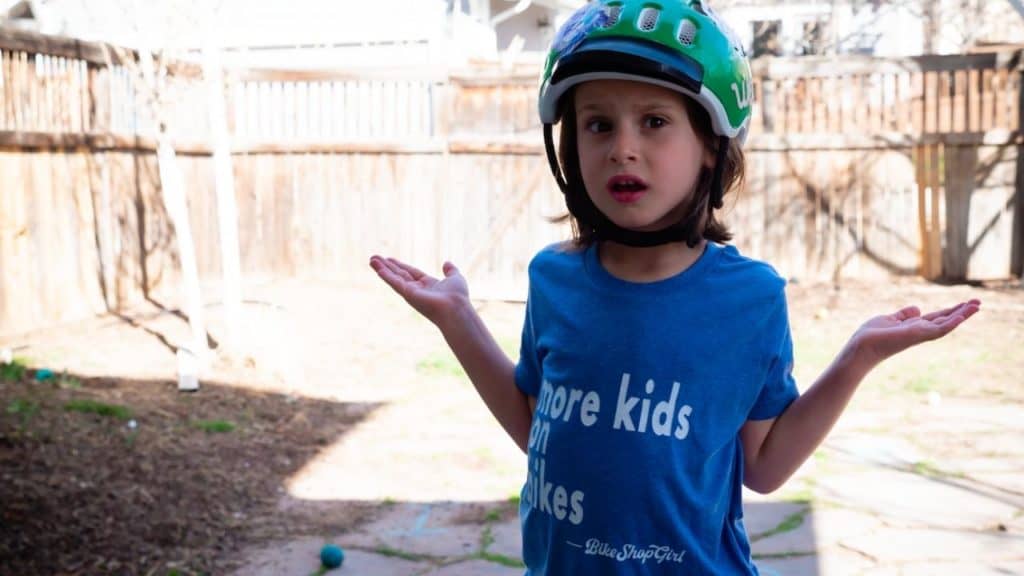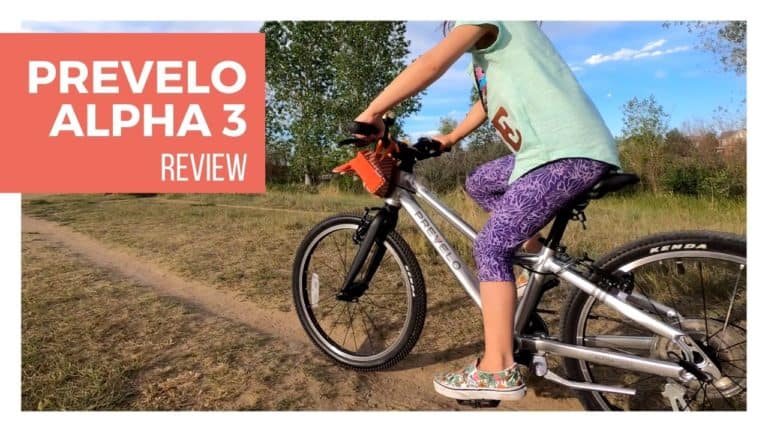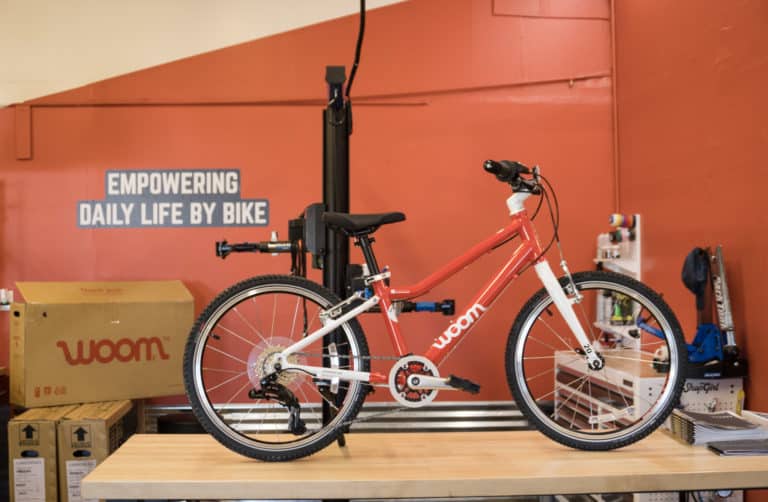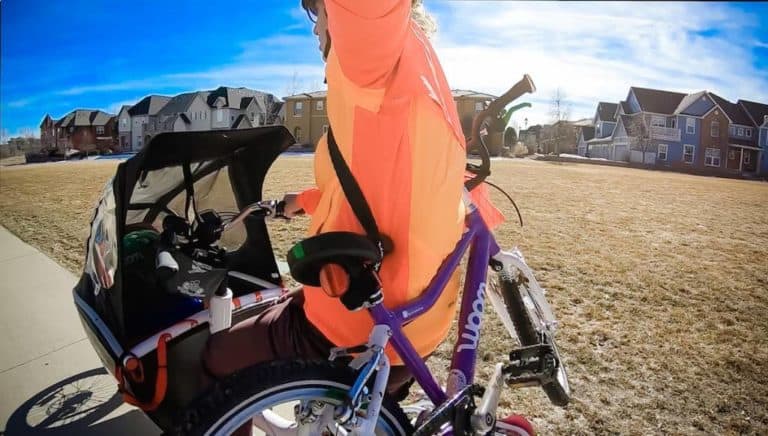Figuring out your kid’s bike size can feel a bit daunting. You don’t want it too big that they don’t want to ride it but you don’t want them to outgrow it next week. This easy-to-follow guide will help you find the right kid’s bike size that they won’t grow out of too quickly!
Table of Contents
How to Easily Find a Kid’s Bike Size
We are going to be measuring your child’s inseam and measuring the potential kid’s bikes you are looking to buy.
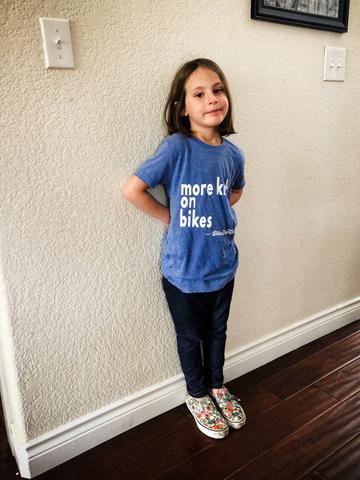
Steps to measuring your child’s inseam:
- Have your child put their shoes on and stand against a wall
- Place a book gently between their legs until it is softly coming in contact with their crotch
- Hold the book parallel to the ground and measure from the top of the book to the ground. You now have their inseam!
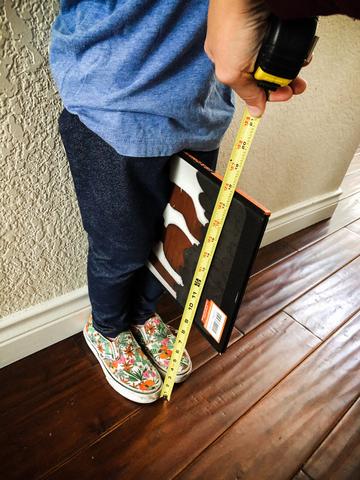
What is the Right Size Bike?
We want to make sure the child’s inseam height is at least 1/2″ to a full inch taller than the standover height of a bike so they can comfortably stand over the bike AND so they can come off the saddle quickly without hitting their pubic bone.
When measuring for standover height, I measure about 1-2″ in front of where the nose of the saddle is. Picture where they would be standing when not in the saddle.
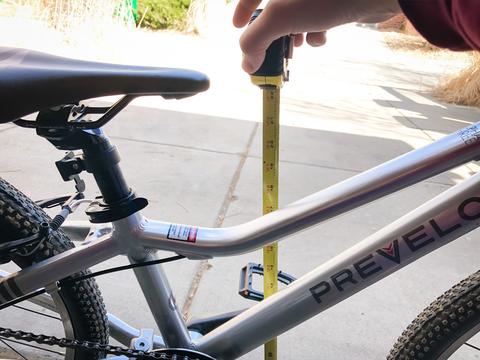
5 Important Things to Remember When Sizing a Kid’s Bike
1. Know Your Kid. I’ll reference sizing, handling, and weight. Without meeting your child I can’t tell you if they are confident, petite, or like to take the path down the stairs but you can! If you have questions about models please contact me!
2. The Bike Must Fit. Not until a 20″ bike or above do I feel okay with putting a child on a bike slightly too big, and then it is still dependent on the kid. It can be dangerous and also damage their confidence making them not want to try again for a long time!
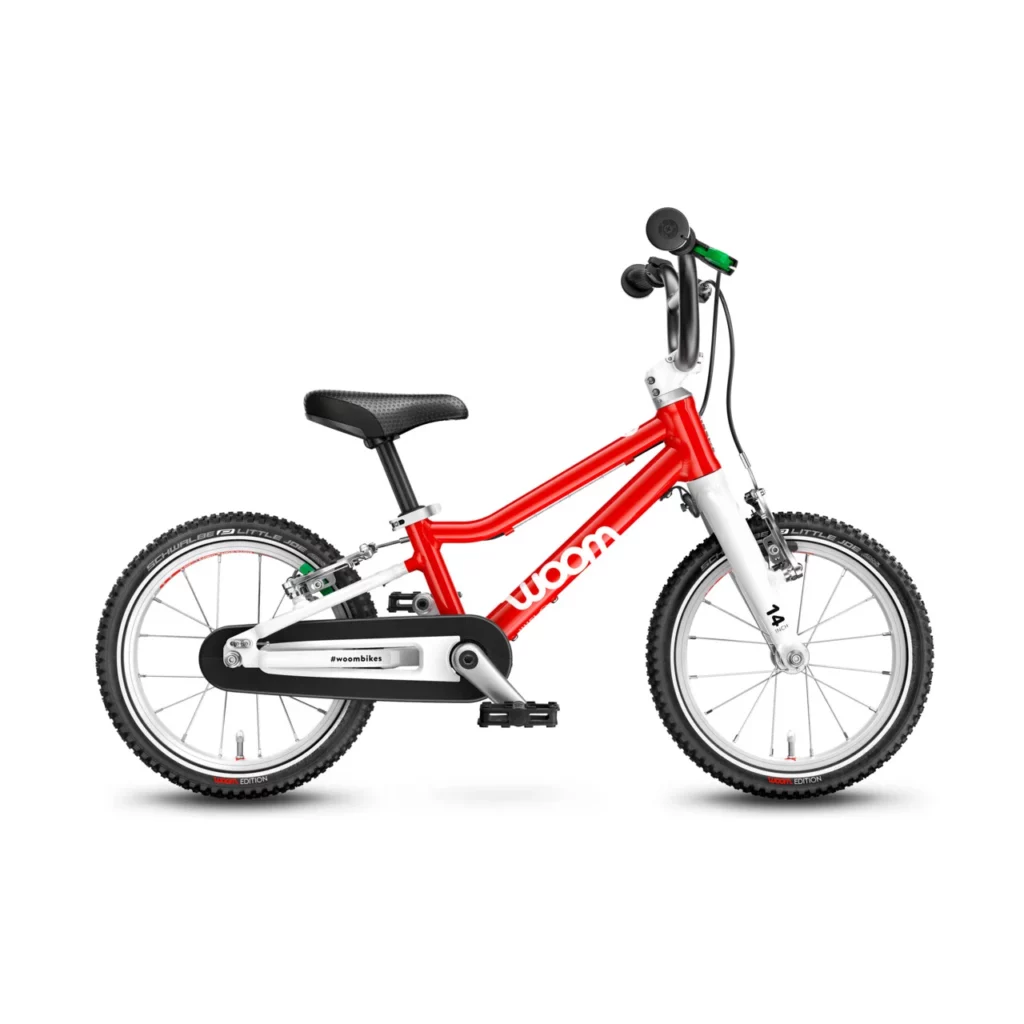
3. Weight Really Really Matters. There are some kid’s bikes that weigh 25-35 pounds for a kid that weighs the same amount! My favorite first pedal bike is the Woom 2 which weighs 11-13 pounds depending on the parts and the Prevelo Alpha One.
Some kids’ first pedal bikes weigh 22+ pounds without training wheels! A kid that age weighs about 30 pounds on average. Now, could you imagine riding a bike that is 75% of your weight? Now imagine that you are just learning to ride.
4. Say NO to Training Wheels. Balance bikes are a fantastic thing. It teaches kids to use their own bodies to control a bike from stopping to balancing. If your child is taller than a typical balance bike simply take the pedals off a good, lightweight, bike that fits them. (I have an article on this coming!)
5. Yes, Some Kid’s Bikes Are Expensive But You’ll Get It Back. Think of that bike as a short-term lease. You’ll buy it at 100% and then when you resell you’ll get 80% back because most of these kid’s bikes never go on sale they keep their value! They are also well worth it if your child starts biking on their own 2-5 years earlier than with a heavier and bulkier bike.
List of Standover Heights for Kids’ Bikes I Have Tried
This list is forever evolving make sure to the full crowdsourced document of kids’ bike sizes and details here.
| Bike Name | Wheel Size | Stand Over Height | Minimum Seat Height |
| woom 1 | 12″ balance bike | 10″ | |
| woom 2 | 14″ | 14″ | 16.5″ |
| Prevelo Alpha 1 | 14″ | ||
| woom 3 | 16″ | 16″ | 19″ |
| Prevelo Alpha 2 | 16″ | ||
| woom 4 | 20″ | 20″ | 22 |
| Prevelo Alpha 3 | 20″ | 17.2 | 20.3 |
| woom OFF 4 | 20″ MTB | 21.5 | 22.5 |
| woom OFF 4 Air | 20″ MTB w/ Fork | ||
| woom 5 | 24″ | ||
| woom OFF 5 | 24″ MTB | 25 | 27.5 |
| woom OFF 5 Air | 24″ MTB w/ Fork |
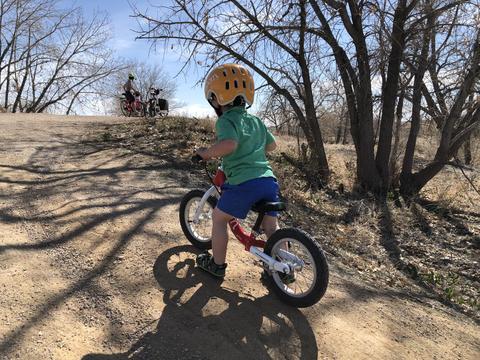
Some Encouragement from a Bike Mom (and family bike shop owner)
I opened up my small bike shop with the goal of making the world a better place for my kids. A bike can solve so many issues that kids face from mental and physical health to freedom and finding confidence in themselves.
The very most important thing to remember in this is that your child is unique and you know them the best. Ultimately you can decide if your kid is more confident for a bigger size or maybe needs the investment in the lightest bike available.
The next most important thing is to remember to make this fun. My daughter didn’t take to a balance bike at first. She loved her little Micro Mini scooter and honestly as long as she was moving I was thrilled. Finally, one day her friend started pedaling so she immediately wanted to try. Having peers and seeing other kids their size doing it is important, but so is wanting to do this because it is a freedom machine. Make it about going for ice cream or a reward for where the bike takes them. Making it a chore or a task they have to achieve doesn’t unlock the magical powers of the bicycle!

